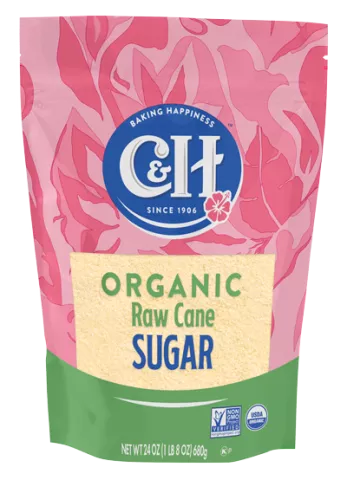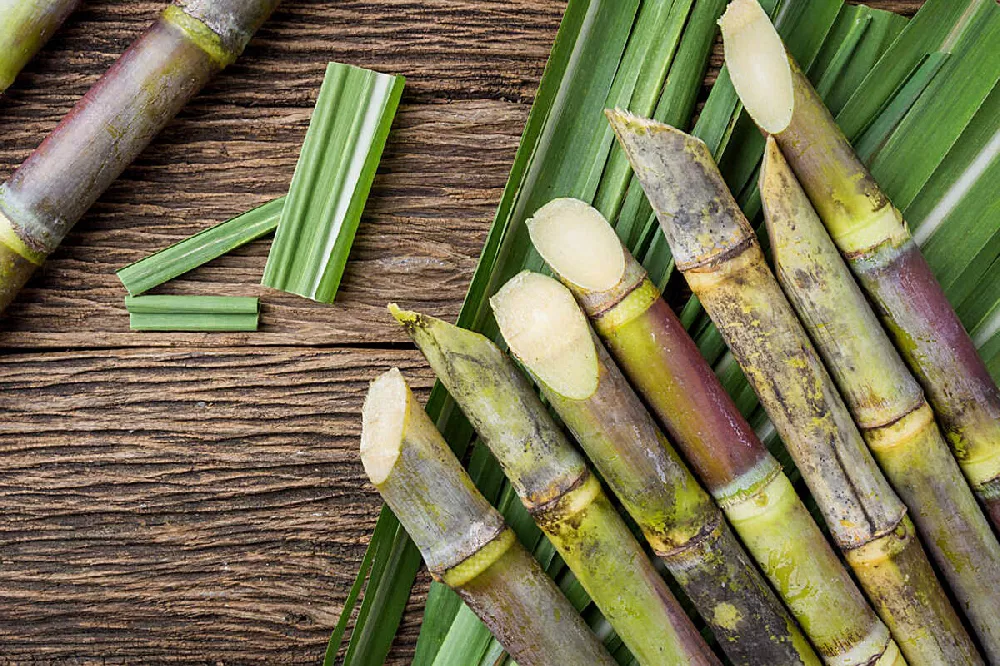Cane Sugar Processing Explained: What Takes Place Inside a Sugar Mill
Cane Sugar Processing Explained: What Takes Place Inside a Sugar Mill
Blog Article
A Comprehensive Guide to the Ecological Effect and Sustainability Practices in Walking Stick Sugar Handling
The environmental influence of cane sugar processing offers a complex selection of obstacles that warrant cautious assessment. From dirt deterioration and excessive water usage to the carbon impact connected with growing and production, the consequences of standard practices are far-ranging. In comparison, the fostering of innovative sustainability actions provides a path towards a lot more responsible production approaches. Recognizing the interplay in between these issues is vital for stakeholders in the sector. What certain practices can be carried out to strike an equilibrium between efficiency and environmental stewardship? The solutions hinge on a more detailed consider both the difficulties and prospective solutions.
Overview of Walking Cane Sugar Processing
Walking stick sugar processing entails a series of systematic actions that transform sugarcane right into refined sugar. At first, gathered sugarcane is transferred to refining facilities, where it undergoes cleaning up to eliminate dirt and particles. Following this, the walking cane is squashed to extract juice, which is then clarified by removing contaminations with home heating and the addition of lime.
The cleared up juice goes through evaporation, where water is eliminated to concentrate the sugar web content. This concentrated syrup is then taken shape with air conditioning, allowing sugar crystals to form. These crystals are separated from the continuing to be syrup making use of centrifugation, leading to raw sugar. To attain refined sugar, the raw item goes through more purification processes, which might consist of cleaning and filtering system to get rid of continuing to be impurities and color.
The final item is then dried out and packaged for distribution. Throughout this entire process, preserving efficiency and quality assurance is important to ensure the sugar fulfills sector standards. Each action in cane sugar handling not only adds to the final item however also has ramifications for resource use and waste generation, setting the phase for discussions on sustainability and environmental impacts connected with sugar manufacturing.
Environmental Difficulties of Manufacturing
The production of walking cane sugar presents several significant environmental challenges that warrant attention. One main worry is the substantial use agrochemicals, including plant foods and chemicals, which can lead to soil degradation, biodiversity loss, and contamination of regional water resources. The drainage from sugarcane areas often brings these chemicals right into nearby environments, interrupting marine life and affecting the health of neighborhoods reliant on these water bodies.
Another challenge is the high power intake linked with sugarcane processing. The boiling and refining phases require substantial heat, largely generated by melting fossil gas, contributing to greenhouse gas exhausts. In addition, the extensive acreage required for sugarcane cultivation can cause logging and environment devastation, further intensifying environment change and harmful wildlife.
Additionally, the labor techniques in some regions elevate moral problems, as workers may face poor working conditions and poor earnings. This scenario frequently perpetuates a cycle of hardship in regional communities. Cane Sugar Processing. Addressing these environmental difficulties is vital for developing a lot more lasting methods in cane sugar production, ultimately benefiting both the setting and the areas associated with this industry
Water and Land Use Influence
Water sources and land utilization are critical components in the walking stick sugar market that significantly influence the atmosphere. The farming of sugarcane calls for considerable water input, with estimates suggesting that it can take in approximately 2,000 litres of water per kg of sugar produced. This extensive use of water commonly causes depletion of local water sources, influencing not just the sugarcane plantations but additionally bordering ecological communities and neighborhoods Read Full Report that count on the exact same Clicking Here water sources for agriculture and residential use.

Moreover, land use for sugarcane cultivation can cause logging and the conversion of all-natural habitats into monoculture ranches. This method lessens biodiversity, interrupts local communities, and adds to soil degradation. The development of sugarcane fields commonly trespasses on useful agricultural land, creating competition for resources between food and biofuel production.
Sustainable methods, such as enhancing watering strategies and applying plant rotation, are important to alleviate these effects. By embracing a lot more effective water use and land administration approaches, the walking cane sugar industry can decrease its eco-friendly impact, ensuring an equilibrium in between agricultural productivity and environmental conservation.
Greenhouse Gas Emissions
Greenhouse gas discharges represent a significant environmental issue within the walking stick sugar processing market, specifically as agricultural practices increase to fulfill worldwide demand. The growing of sugarcane, a plant that flourishes in exotic environments, relies greatly on synthetic plant foods and pesticides, which add to nitrous oxide discharges. Additionally, land-use changes, consisting of logging for brand-new sugarcane plantations, release co2 saved in greenery and dirt.
During handling, energy intake is another major resource of greenhouse gas discharges - Cane Sugar Processing. Several sugar mills use nonrenewable fuel sources to power equipment and generate warm, leading to significant carbon impacts. Furthermore, the transport of raw sugarcane and ended up products adds layers of exhausts with fuel combustion in vehicles
The collective effect of these emissions exacerbates climate modification, posing dangers not only to the atmosphere yet additionally to the long-lasting stability of the industry. Stakeholders need to acknowledge the immediate need for comprehensive approaches that attend to these emissions. This involves assessing present agricultural methods, processing approaches, and transport systems to recognize areas for enhancement and mitigation. Dealing with greenhouse gas discharges is crucial for promoting a more lasting walking stick sugar sector in a transforming environment.

Lasting Practices and Innovations
Lasting methods and innovations are significantly important in the walking stick sugar processing market as stakeholders look for to lower ecological influences while keeping productivity. One considerable innovation is the implementation of i thought about this incorporated plant administration, which enhances resource usage by incorporating dirt administration, pest control, and plant turning techniques. This approach boosts yield while minimizing chemical inputs and maintaining soil health.
In addition, the fostering of renewable resource sources, such as biomass from sugarcane deposits, has gotten grip - Cane Sugar Processing. By converting waste products into energy, refining facilities can minimize their reliance on nonrenewable fuel sources, therefore decreasing greenhouse gas discharges
Water monitoring methods have additionally seen improvements with the recycling and reusing of water in handling plants, significantly minimizing freshwater intake. Innovations in technology, such as precision agriculture, allow farmers to monitor crop wellness and resource use a lot more successfully, making sure lasting farming techniques.
Moreover, accreditation programs like Fair Profession and Rainforest Alliance urge environmentally accountable farming practices and advertise social equity within the supply chain. By accepting these sustainable methods and technologies, the walking stick sugar processing industry can boost its strength and add positively to ecological stewardship.
Verdict
The environmental influence of walking stick sugar handling offers substantial obstacles, including soil degradation, high water consumption, and greenhouse gas emissions, along with honest problems associated with labor methods. Dealing with these issues via sustainable methods, such as integrated crop administration, renewable resource adoption, and water recycling, is vital. By promoting socially equitable and environmentally liable techniques in sugar manufacturing, the sector can reduce its adverse impacts, guaranteeing a more sustainable future for both areas and environments associated with this sector.
Walking cane sugar handling entails a series of methodical actions that transform sugarcane right into polished sugar. Each step in walking stick sugar handling not only contributes to the final item but likewise has ramifications for source use and waste generation, setting the phase for conversations on sustainability and environmental effects connected with sugar production.
Greenhouse gas emissions represent a significant environmental concern within the walking cane sugar processing market, particularly as agricultural techniques expand to fulfill international demand.Sustainable methods and developments are increasingly essential in the walking stick sugar processing industry as stakeholders seek to decrease environmental impacts while preserving performance.The ecological influence of walking stick sugar handling offers significant difficulties, including dirt degradation, high water usage, and greenhouse gas exhausts, together with ethical problems related to labor practices.
Report this page